Storytime Plan includes these books with suggested activities and relation to the early literacy skills.Arabella Miller's Tiny Caterpiller by Clare Jarrett On the Farm by David Elliott A Visitor for Bear by Bonny Becker Tweedle Dee Dee by Charlotte Voake [Some activities are more for school-age children.] readtousstoryhourkit.pdf
Orange Pear Apple Bear by Emily Gravett
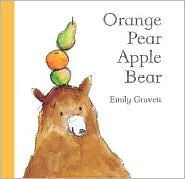
Re-tell the story using flannel pieces with the children telling the story as you put the pieces on the board. As the whole story has four words the children learn it quickly. This book can also be used to demonstrate narrative skills.
Submitted by Leslee Farish Kuykendal, Chicago Public Library
Tippy-Toe Chick, Go! by George Shannon
Early Literacy Aside--Explain: Letting your children know when you really enjoy a book helps them see your own enjoyment. Even doing this small thing helps develop print motivation, a child's interest and enjoyment of books and reading.Early Literacy Aside--Example: Our next book is funny and clever. I enjoy this book because the little chick is the one who is so smart! Listen to what happens. Read the book Tippy-Toe Chick, Go! by George Shannon. [For more participation, which also supports print motivation, have the participants chime in for RUFF-RUFF and tippy-toe, tippy-toe.]
Buzz, Buzz, Buzz! Went Bumblebee by Colin West
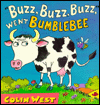 Early Literacy Aside--Explain: Narrative skills can be developed by having your children tell stories. This is easier for some children when they recognize patterns so that they can predict what will happen next.Early Literacy Aside--Example: As we read the book we want to encourage our children to recognize the pattern and to repeat "buzz, buzz, buzz" and "buzz off."
Read Buzz, Buzz, Buzz! Went Bumble-bee by Colin West
Fingerplay: Here is the Beehive
Here is the beehive. Where are the bees? (Hold up fist.)
Hidden away where nobody sees. (Move other hand around fist.)
Watch and you see them come out of the hive. (Bend head close to fist.)
One, two, three, four, five. (Hold fingers up one at a time.)
Bzzzzzzzz all fly away! (Wave fingers.)
Early Literacy Aside--Empower: Children enjoy repeating phrases as they did in our book and song. Please help your children look for patterns in the books and songs you do at home. This helps foster your children's narrative skills which will later help them understand how stories work and will help them understand what they read.
Early Literacy Aside--Explain: Narrative skills can be developed by having your children tell stories. This is easier for some children when they recognize patterns so that they can predict what will happen next.Early Literacy Aside--Example: As we read the book we want to encourage our children to recognize the pattern and to repeat "buzz, buzz, buzz" and "buzz off."
Read Buzz, Buzz, Buzz! Went Bumble-bee by Colin West
Fingerplay: Here is the Beehive
Here is the beehive. Where are the bees? (Hold up fist.)
Hidden away where nobody sees. (Move other hand around fist.)
Watch and you see them come out of the hive. (Bend head close to fist.)
One, two, three, four, five. (Hold fingers up one at a time.)
Bzzzzzzzz all fly away! (Wave fingers.)
Early Literacy Aside--Empower: Children enjoy repeating phrases as they did in our book and song. Please help your children look for patterns in the books and songs you do at home. This helps foster your children's narrative skills which will later help them understand how stories work and will help them understand what they read.
Who's There on Halloween? by Pamela Beall

Song: Do a rhyming song to the tune of Are You Sleeping? We are rhyming; we are rhyming. Rhyme with me; rhyme with me. Nose rhymes with toes; nose rhymes with toes. (substitute other words from story) Rhyme with me; rhyme with me. Early Literacy Aside--Empower: Take advantage of lots of opportunities to play rhyming games with your children. Simple activities like this will help your child be able to sound out words when they learn to read.
Submitted by participants in Saskatchewan Library Association Conference
Fidgety Fish by Ruth Galloway
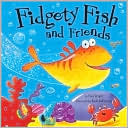
Submitted by participants of Saskatchewan Library Association Conference
Dog Blue by Polly Dunbar
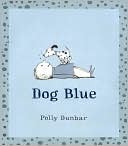
Submitted by participants of Saskatchewan Library Association Conference
Animal Boogie by Debbie Harter
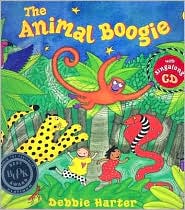
How To Be a Good Dog by Gail Page
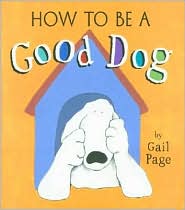
Submitted by Saskatchewan Library Association conference participants
Who Is Driving? by Leo Timmers

Submitted by Saskatchewan Library Association conference participants
Eat Your Peas by Kes Gray
Click below for a storytime plan including the book Eat Your Peas by Kes Gray and highlighting print motivation.

peaspeaspeas1.doc Submitted by participants of Saskatchewan Library Association Conference 2008
Board books
 Early Literacy Aside--Example: Board books are a great investment for babies! They allow babies to handle books freely, and even chew them. Good first choices are board books with pictures of everyday things. Try pointing to the pictures and then to the real objects around you.This helps babies get the idea that pictures and words are symbols for real things, a basic concept for later reading.Share a board book of your choice.
Early Literacy Aside--Example: Board books are a great investment for babies! They allow babies to handle books freely, and even chew them. Good first choices are board books with pictures of everyday things. Try pointing to the pictures and then to the real objects around you.This helps babies get the idea that pictures and words are symbols for real things, a basic concept for later reading.Share a board book of your choice.
Submitted by Cindy Christin, Bozeman (MT) Public Library
Talking while reading
 Early Literacy Aside--Explain: Talking with your children while reading, encouraging them to make comments and ask questions is one way to share a book that develops your child's understanding of the book. Make reading with your child a postive experience by allowing your child to make comments and ask questions. Try to focus all your attention on your child for that time.During the storytime, demonstrate these techniques with one or more of your books. Point out what you are doing.
Early Literacy Aside--Empower: Talking with your children and giving them time to respond is supervaluable, even in a conversation consisting entirely of baby babble. This helps your children develop conversation skills. Remember that it can take young children from 5 to 12 seconds to process a question and formulate a response, so it's really important to gie them that extra time to express themselves.
Early Literacy Aside--Explain: Talking with your children while reading, encouraging them to make comments and ask questions is one way to share a book that develops your child's understanding of the book. Make reading with your child a postive experience by allowing your child to make comments and ask questions. Try to focus all your attention on your child for that time.During the storytime, demonstrate these techniques with one or more of your books. Point out what you are doing.
Early Literacy Aside--Empower: Talking with your children and giving them time to respond is supervaluable, even in a conversation consisting entirely of baby babble. This helps your children develop conversation skills. Remember that it can take young children from 5 to 12 seconds to process a question and formulate a response, so it's really important to gie them that extra time to express themselves.
Submitted by Cindy Christin, Bozeman (MT) Public Library and Tracey J., Sacramento (CA) Public Library
Songs
 Early Literacy Aside--Explain: Singing songs is one good way for children to become aware of the different sounds that make up words. We call this phonological awareness. Singng helps them get a feel for the rhythm of language and how words are divided into syllables because there is a different note for each syllable. This will help them sound out words when they learn to read.
Submitted by Cindy Christin, Bozeman (MT) Public Library
Early Literacy Aside--Explain: Singing songs is one good way for children to become aware of the different sounds that make up words. We call this phonological awareness. Singng helps them get a feel for the rhythm of language and how words are divided into syllables because there is a different note for each syllable. This will help them sound out words when they learn to read.
Submitted by Cindy Christin, Bozeman (MT) Public Library
What Shall We Do With the Boo-Hoo Baby? by Cressida Cowell
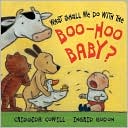
Submitted by Cindy Thompson, Roanoke City (VA) Public Library
Night in the Country by Cynthia Rylant
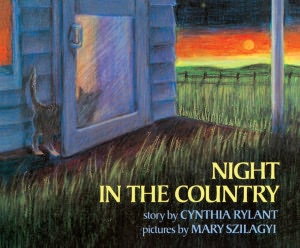
Submitted by Sharon Lindsay, Rockbridge Branch, Bath County (VA) Public Library
Whose House Is This? by Charles Reasoner
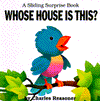 Early Literacy Aside--Explain: There are many ways we can help children enjoy books as we share books together. Children who have positive experiences around books and reading are more likely to stick with learning to read even when it is difficult. I'll be pointing out some ways to share books to make it enjoyable.
As you read the book have children repeat the phrase, "I do. I'm a . . . " with each animal.
Early Literacy Aside--Example: Having the children participate by guessing the animals and responding when the animal appears helps them enjoy the book. This helps support their print motivation.
Early Literacy Aside--Explain: There are many ways we can help children enjoy books as we share books together. Children who have positive experiences around books and reading are more likely to stick with learning to read even when it is difficult. I'll be pointing out some ways to share books to make it enjoyable.
As you read the book have children repeat the phrase, "I do. I'm a . . . " with each animal.
Early Literacy Aside--Example: Having the children participate by guessing the animals and responding when the animal appears helps them enjoy the book. This helps support their print motivation.
Submitted by Tara Smith, Roanoke County (VA) Public Library
Children's names or any words
Early Literacy Aside:--Explain: Separating a word into sound parts is called segmentation. Playing with words this way with your children now will help your children later when they learn to break words into syllables to decode words. Clap childen's names or choose words with different numbers of syllables. Early Literacy Aside--Example: Clapping or tapping helps children hear parts of words which will make it easier for them to sound out words when they learn to read. [for 3 - 5's you can use rhythm sticks]
Submitted by Di Gagnier, Roanoke County (VA) Public Library
Harry and the Terrible Whatzit by Dick Gackenbach
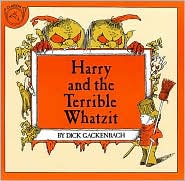
Old MacDonald Had a Farm Song
 Early Literacy Aside--Explain: Songs are a great way to incorporate the early literacy skill, phonological awareness. Hearing and learning animal sounds helps your children hear the smaller sounds in words and singing emphasizes different syllables. This helps your children later to sound out words.
Submitted by Wendy B. Rancier, Roanoke County (VA) Public Library
Early Literacy Aside--Explain: Songs are a great way to incorporate the early literacy skill, phonological awareness. Hearing and learning animal sounds helps your children hear the smaller sounds in words and singing emphasizes different syllables. This helps your children later to sound out words.
Submitted by Wendy B. Rancier, Roanoke County (VA) Public Library
